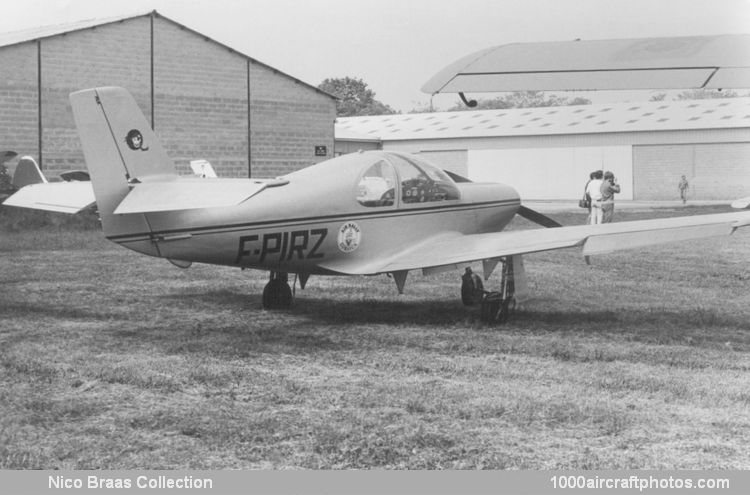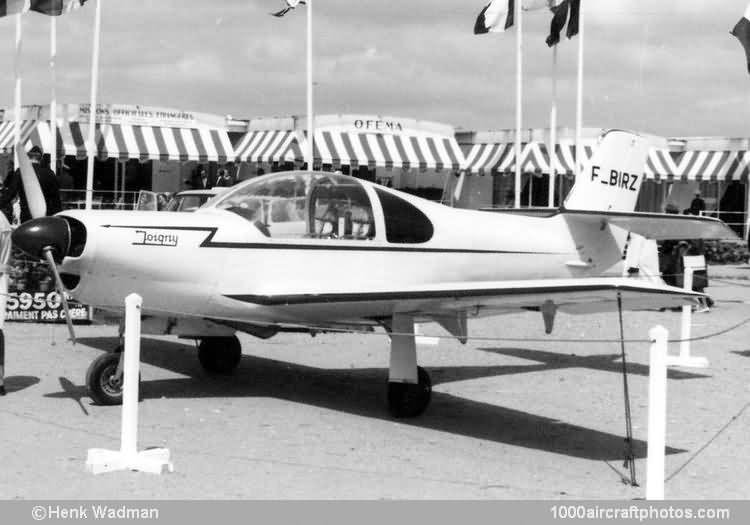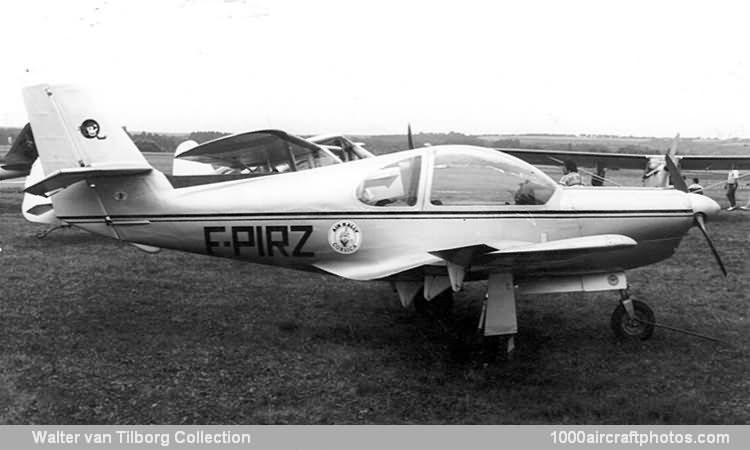09/30/2011. Remarks by
Johan Visschedijk: "During the 1950s the SRCM (Société de Recherches et de Constructions Mécaniques), with offices at Courbevoie, Paris, France, and works at Joigny (78 mls, 125 km south-east of Paris) had specialized for some years in the design and manufacture of hydraulic equipment for light aircraft. It has also built for the Aero-Club de Joigny and other customers a number of light aircraft, including six CAB Minicabs, two CAB Supercabs and several Jodel 65s.
After failing to obtain a license for manufacture of the Supercab and for the Aviamilano F.8L Falco, SRCM decided to design a completely new three-seat light monoplane. This materialized as the SRCM-153 Joigny, construction of the prototype commenced in April 1958 and it was first flown in June 1959, under the provisional registration F-WIRZ.
(F-BIRZ) (
Henk Wadman Collection)
On June 29, 1960 the aircraft was reregistered F-BIRZ after it received its
CofA; it was demonstrated at the 1963 Paris Air Salon.
(F-PIRZ) (
Walter van Tilborg Memorial Collection)
The sole SRCM-153 was deregistered on January 29, 1979 as condemned. It reappeared on the French register in the homebuilt category as on November 23, 1983. Two years later, November 19, 1985 it was again deregistered, this time as 'destroyed', it had crashed near Coudeville the previous August 4.
Wings: Cantilever low-wing monoplane. Wing section
NACA 23015 at root, NACA 33010 at tip. Aspect ratio 6.6. Chord 5 ft 3 in (1.60 m) at root, 3 ft (0.91 m) at tip. Dihedral 6°. Incidence 4° at root, 2° 30' at tip. All-wood structure, integral with center fuselage, built around single main spar and an auxiliary rear spar, with leading edge torsion box and plywood covering. Plain ailerons. Hydraulically-operated double-slotted flaps, supplemented by hydraulically-operated air-brake under fuselage.
Fuselage: All-wood structure. Cabin section integral with wing. Rear section is a plywood monocoque, integral with tail unit. Small tail bumper.
Tail unit: Cantilever monoplane type, integral with fuselage. All-wood structure. Trim tabs in rudder and port elevator. Elevator mass-balance moves inside fin.
Landing gear: Retractable tricycle type of SRCM design and manufacture. Hydraulic retraction. Hydraulic shock-absorbers. All three wheels are same size and carry Dunlop tires size 400 X 100, inflated to 42.7 lb/sq.in (3 kg/sq.cm). Steerable nose wheel. Simca V hydraulic brakes. Wheel track 9 ft 6 in (2.90 m). Wheel base 5 ft 6 in (1.67 m).
Power plant: One 150 hp Lycoming O-320-A1A four-cylinder horizontally-opposed air-cooled engine, driving a two-blade Hartzell-metal constant-speed airscrew. Fuel in three Superflexit bag-type tanks; one in each center wing outboard of the landing gear, with capacity of 15.85 gal (60 l) each, and one in center wing under cabin, with capacity of 31.7 gal (120 l).
Accommodation: Pilot and two passengers in enclosed cabin with large forward-sliding transparent canopy. Dual controls. Provision for blind-flying instruments, VHF radio, radio-compass and VOR.


